(Sponsored by the Refugee Research Network (RRN); organized by the RRN’s Gender & Sexuality Cluster).
The Borderless Higher Education for Refugees (BHER) Project (http://crs.yorku.ca/bher) and the Refugee Research Network (RRN) (http://www.refugeeresearch.net) are interested in how security in the Dadaab refugee camps may affect the access of women to the BHER university courses that will be offered just outside the perimeter of the camps as of August 2014. We are in the process of preparing a “Gender Sensitive Security Policy” for the BHER Project and would appreciate your input on the following questions. Please have a look at the BHER website http://crs.yorku.ca/bher before contributing to a discussion on any of the questions below:
- How should we define security for refugee women in the Dadaab camps?
- What security issues may affect refugee women’s access to university courses in the BHER Learning Centre? How can these be addressed?
- What can be done/built into a policy on gender-sensitive security?
Guest contributors:
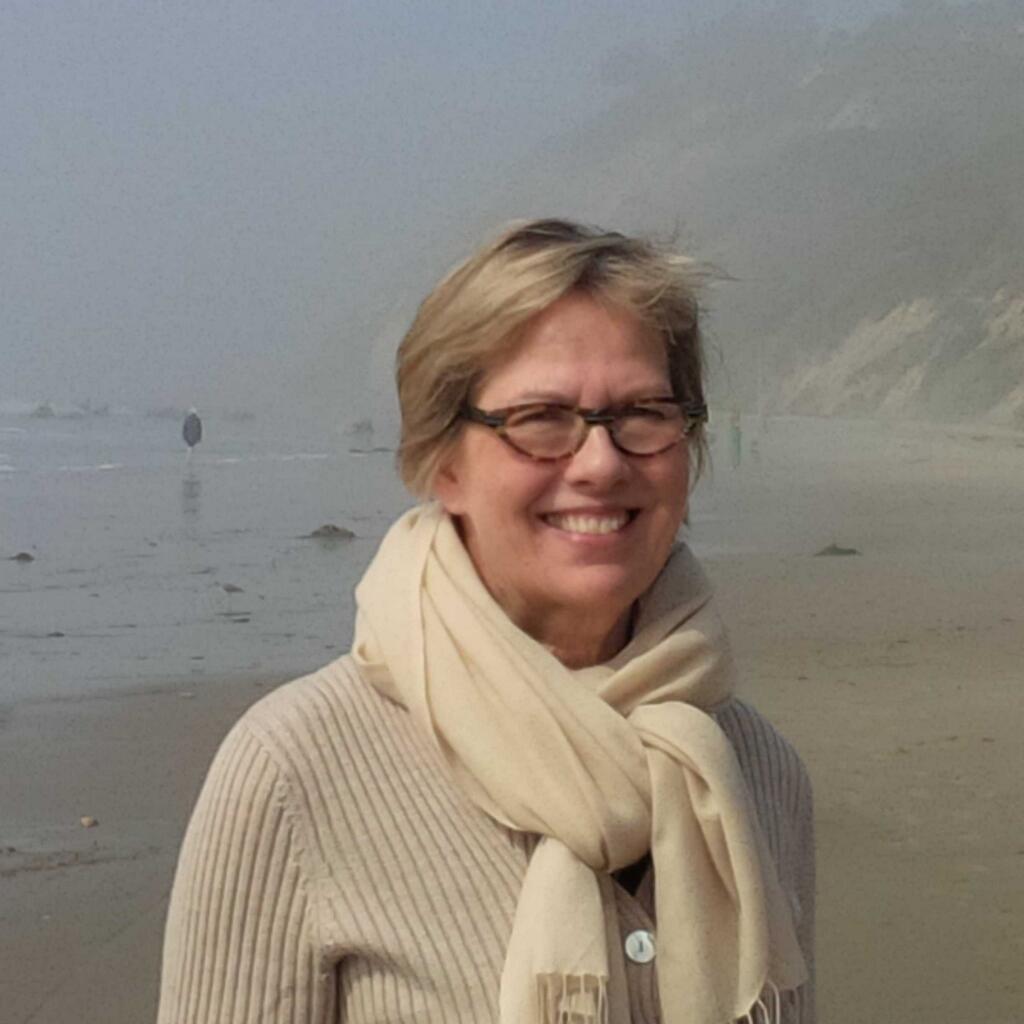 |
| Wenona Giles, Professor, Anthropology, Scholar, Centre for Refugee Studies, York University, Toronto, Canada Co-lead, Borderless Higher Education for Refugees Project |
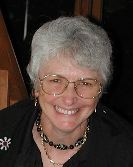 |
| Eileen Pittaway, Senior Lecturer, School of Social Work, Honorary Associate (Previously Centre Director), Centre for Refugee Research, University of New South Wales, Sydney, Australia |
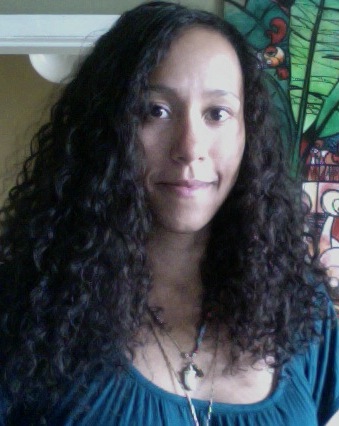 |
| Dacia Douhaibi, PhD Candidate, Department of Geography, Research Assistant, BHER Project, York University, Toronto, Canada |
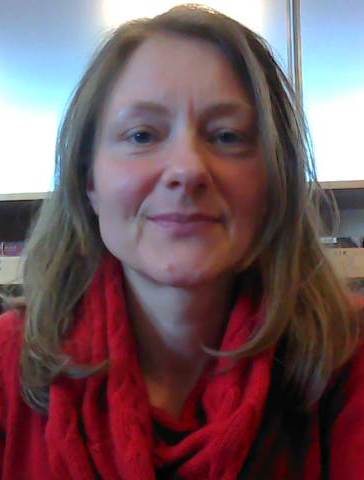 |
|
Marta Bak, MA Candidate, Research Assistant, BHER Project, York University, Toronto, Canada |
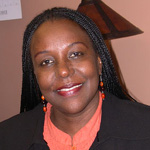 |
| Amani El Jack, Assistant Professor, Women’s Studies, Lecturer of Women’s Leadership in a Global Perspective, McCormack Graduate School, University of Massachusetts, Boston, USA |

Online education greatly increases access to education for refugees. A simple computer station(s) set up in refugee camps, with internet access, could provide safe access to educational opportunities such as those provided by NextGenU.org. NextGenU Courses are free, competency-based, and created in partnership with leading universities, professional societies, and government organizations like the U.S. CDC, Grand Challenges Canada, and the World Health Organization. Current courses are in the health sciences and will soon expand to include basic sciences and other disciplines. Opportunities such as those provided by NextGenU exemplify how technology can advance educational opportunities for all. See http://www.nextgenu.org
This is an interesting idea – an outreach computer station within the camps (the Learning Centre is just outside the camps). But still there are the issues of security of the woman student who is using that computer station; the computer station itself could be stolen (could it be placed in a computer café?).
NextGen U is a great organization that is helping us design our Health degree program for the BHER project.
Best, Wenona
I agree with Wenona in that we are looking at two separate but interconnected issues here: one is the access to technology that can be used in making access to education easier and possible, and two, the safety and security of female students using that technology. How do we ensure that the technology is secure, and most importantly, how do we ensure that those accessing it are safe while doing so?
In addition, access to education entails much more than just access to technology, and that in itself includes likely travel to and from the common study space. Learning includes studying, reading, writing, discussions, etc., all of which require time and space. Time that will likely be taken away from other commitments, and space to and from which female students need to travel. How do we ensure that they do so in safety? How do we approach socio-cultural issues that require females to perform certain roles that leave very little, if any, time for education?
Developing an effective gender sensitive security policy that truly addresses the unique needs of students in Dadaab, and perhaps particularly female students, is a challenge. Access to education for students in Dadaab seems to entail more than the already huge achievement of providing post-secondary programming and an educational facility on-site. All students, regardless of where they live, need to be able to attend courses, have space to study, and have access to tools to support their work. I believe that a useful gender sensitive security policy, particularly in the context of the Dadaab refugee camps, requires a holistic view that encompasses the complete student experience, rather than a focus only on the time spent in the classroom or even in the learning centre.
I consider my own experience as a student at York University; if I felt that my security was at risk traveling to reach the campus, I would likely choose not to make that trip to campus. Similarly, if I did not have access to workspace for studying or conducting research online, I would not progress through coursework. Finally, if while in the classroom or university, if I felt uncomfortable or threatened as a result of the physical or social structures in place, I would likely not attend classes or make use of that learning space. An effective and gender sensitive security policy must work towards addressing this entire sphere of learning.
I look forward to having some engaged discussion on what security means and how we might develop ideas for security policy that can support personal security for all students participating in BHER. It will be particularly interesting to hear from those that have experience in the camp environment, or have particular insights into the needs and concerns of female students in this social context.
These are all crucial issues raised by Dacia: travel; access to workspace; classroom environment. Could we take each of these in turn and develop a better understanding of each (need input from Dadaab BHER students) and some ideas about how to address these gendered roadblocks? Wenona
Question One: How should we define security for refugee women in the Dadaab Camps?
I may not have an relevant definition on security right now, but I would like to share how I approached the protection or security issue of the refugee girl-child in a recent study I carried out in Dadaab and Kakuma
I carried out a research in 2013 in Dadaab and Kakuma titled ‘the protective role of the female teacher on refugee girls’ attending secondary education in the two camps. Security of the girl-child in my view came from three aspects of the protective role of Education in Emergencies which is well articulated writings by Triplehorn, Physical, Psychosocial and Cognitive Protection.
I carried out my research based on the three types of protection required by the girl child. I found out what their protection issues were based on the three categories and the roles of the female teacher under each category. I believe as you offer post-secondary education (an excellent and timely intervention for the refugees higher education )to the girls and the boys the issues of security should be addressed along then same lines or categories if you like.
I believe my findings of protection issues faced by the girls in the secondary schools can
inform the appropiate measures or strategies that girls can apply while at the university.
Hi caroline, your work sounds really interesting? Any way to get a hold of some of your writing/articles/research about the topic? It sounds like very useful material to inform this discussion and other work in the Dadaab region.
Thanks!
Thanks for taking an interest. I am in the process of writing the paper and I have not yet identified a journal to send it to. I could send to this discussion a summary of the findings as soon as I figure out a way of presenting it.
Please do send us information! this would be most helpful to us. Thanks, Wenona
I would say security in this place can be approached from different perspectives such that we look at physical security from harm and attacks, safety from discrimination and intimidation especially from the point of view of participation in class activities. It also involves setting aside of women in an environment where they can engage in activities without fear of being criticized as going against community culture for example making a brick fence around a place where they can freely play without being thought of as acting crazy. Finally i would say there is the part of living a life where you can be sure you will be in school the next day and not be a wife of someone that is elimination of uncertainties.
Concerning the security issues that can affect women’s access to Courses in the BHER Learning centre, the terror attacks that are unpredictable and happen once in a while, make some parents to withhold their girls especially at some days of learning rather than risk their lives. Secondly, there are a few cases of bandits ” shiftas” who rob markets once in a while and that may also contribute to absenteeism of girls. The same can be worked out through localizing learning so that secondary schools are equipped with Internet so that learning can take place there as well when it is complex to travel to the BHER Learning centre.
Rightly so, access to education is about more than provision of programs and facilities, just as security for students, and female students in particular, requires thinking beyond simply physical security and fear. While Dadaab is certainly a unique environment, such concerns of access and security are being explored in other camp environments, particularly as post-primary education in camps becomes more widespread. Above all, issues raised in this forum should be discussed with refugee women in Dadaab, as likely there are differences and dynamism in definitions of security. Security (or peace) of mind is also important, within the self and the extended family sphere. This broader focus is certainly intimately connected with issues of poverty.
I do not have Dadaab-specific experience; however, I did do fieldwork in another (much-smaller) camp context in SSA, in Malawi, which has a Learning Centre for their online higher education program, and there could be some useful points for consideration. Women must have secure access to food and non-food items, including food distribution, firewood/charcoal, paraffin, sanitary pads, etc., and must have support in their balance of household responsibilities and academic obligations. Proper outdoor lighting also cannot hurt!
Security appears to be intimately linked to access to reliable information and early warning systems, with regular communications between and within different communities both in the camp and in host communities. After-school study spaces for women, a mentor/buddy program for students, and a higher ratio of female teachers/administrators/facilitators at the Learning Centre, could also be possibilities for gender-sensitive programme components.
Yes, with regards to transportation, I like the idea of some kind of buddy program for women. Could the men students organize this? I believe that there is a White Ribbon Campaign in the camps – could this group be mobilized to assist with transportation/ advice? Best, Wenona
I strongly agree that security and safety issues need to be discussed directly with women living in Dadaab camps. We are currently seeking female BHER students’ input on those issues.
Access to tertiary education indeed enhances refugees’ security in Dadaab in a variety of ways. The debate around refugees’ security has often invoked different contested definitions. Whether security is defined as minimizing threats to refugees’ lives, particularly gendered based violence; personal-political; or eradication of poverty, what is apparent from my own research with refugees in protracted sites in Kenya is that women, men and children recognize that education provides them with a sense of hope for a peaceful future, and reduces the risk of their engagement in dangerous militarized activities. For women and girls, education is important because it enables them to gain the needed knowledge and skills that will allow them to engage in public spaces, paid employment, self-reliance, and eventually contributes to their security, equality and independence.
This leads to the question of what can be done to promote gender-sensitive security? It is important to highlight the gendered dimensions of access to education in the Dadaab as women and girls continue to experience unequal access to university courses/education in comparison to men and boys. In order for women to benefit from the BHER Learning Center, we should continue to emphasize how women and girls experience education in gendered ways due to family responsibilities and cultural norms. As a result, we should also pay closer attention to the delicate balance between gendered domestic responsibilities (cooking, collecting firewood /water… ect.) and academic expectations. Policies on this need to ensure that education and gender-sensitive security are not mutually exclusive!
Thanks all for an interesting start to the discussion. I wonder if the Kenya Equity in Education Program (KEEP) has a gender and security policy (or research) in place to inform their large-scale work around gender and education?
I think amani’s comments also reflect ddouhaibi’s comments regarding security that spans beyond education and educational contexts. I wonder if given the large and complicated scope of security issues for women (and all) in the region, part of the question for this discussion is around what aspects of security can actually be address by BHER and in the context of supporting access to higher education in the region? Perhaps it is a reality to have to select small-scale measures to contribute to security, rather than tackle the full scope of insecurity in the region. One thought that comes to mind, and considering some of ddouhaibi’s self-reflective comments on the higher education experience, is around movement and safety. I wonder if something along the lines of a ‘safe walk’ program where students are met in groups to walk to and from designated areas (which might in this case include residence in the community as well as on to campus) would be useful in this context?
I certainly do agree that consultation with community members is key to understanding what can be successful in this context.
Yes, the idea of a safe-walk program – similar to what already exists at York University and many other universities would be most helpful. in an earlier comment, I suggest that the organization of this come from among the students and from within the camps and maybe the White Ribbon Campaign which I understand still exists in the camp? Best, Wenona
I agree with Amani, attention needs to be directed to how the daily lives of female students, the types of responsibilities that they must maintain outside of the classroom impact on academic expectations. Professors need to be aware of what occurs in the lives of women students outside the classroom and take this into account in the classroom – this is an integral part of pedagogy. For example we discovered that many female students were not attending classes in the afternoons because they had duties in their homes. How should the BHER program respond to this issue? As well, women students do not like to go to internet cafes in the evening where there is electric lighting for reading (most/many do not have lighting to read by at home), because of the dangers of travelling outside of their homes in the evenings. Can you advise the BHER program how to address the dangers of travelling at night and/or during the day to study sites and to the BHER Learning Centre?
This is a fascinating discussion – from access to security to femininity and what jobs/responsibilities girls have that may prevent them from getting to school. The ‘offer’ of school is there, but uptake is not. Would scholarships for girls that give families money to buy the services their daughters might otherwise provide free up time for them to attend? The scholarships could require attendance and the maintenance of certain marks, but this could demonstrate the value of girls in a currency everyone understands. Some may argue that this has the look of conditional cash transfers used to eradicate acute poverty in so many places, from rural Brazil to low-income parts of NYC, and maybe it is not so different, except that it is targeted. Downside? International program intervenes (interferes?) with short-term money to address long-term problem. This is a real conundrum.
I agree with so much has been said so far in the discussion. In particular the importance of education as a protection tool – but also the necessity of other protection measures being firmly in place before many girls and women can access education. I have 2 points I would like to make
1. I have not worked in Dadaab camp, but 12 years ago I was involved in an education program in Kakuma camp. I was actually sent there by the Australian Government to de-fund the program because it was not catering to girls and women only to boys and men. It is a very long story, but a couple of things I think are still very relevant. The various NGO’s and some of the male community leaders NGO’s all put the non participation of girls and women in high school and training down to “culture”. After several weeks living in the camps we unpacked what this meant. Girls and women could not attend school and training because there were cultural expectations that they collect food, water and firewood. Many young women had the care of young children, either their siblings, or their own, as forced early marriage was very prevalent and many young girls had babies of rape. The issues of girls not being “allowed” to attend school , ie to gain an education, was less a cultural issue per see, but safety travelling in the camp was a major concern. There was a high level of gender violence and rape, by a range of protagonists. Most importantly to families, school and training times were rigid and therefore girls with many other (cultural) responsibilities could not attend classes. Working with parents and male leaders, a more flexible curriculum was developed which took into account the cultural responsibilities of girls and young women. ie it allowed for them to collect food, and water at the set times and still attend classes. Childcare was provided at the training center, and escorts were provided to take girls to different zones of the camp at the end of classes. Most importantly, the young women identified that the major barrier to attending high school and training was the lack of sanitary materials. Provision was made fro these to be manufactured in one of the income generation schemes and distributed to school children and women attending training. Theres measures resulted in a huge increase in eh number of girls and young women attending school and training.
In 2011, UNHCR stated that internationally they were only able to provide about 5% of the sanitary materials needed by women of childbearing age in camps and urban sites. In work we did for the UNHCR Women’s Dialogues for the 60th anniversary of the convention (we interviewed over 1000 women in 7 countries) this was a major problem. Women explained that it was not only the lack of re-useable sanitary materials what was the problem, but also that lack of a bucket in which to wash them, and the tiny amount of soap distributed per family. “How can we wash these rags in the same bucket that we prepare food?” I think that it is the interplay of the lack of protection measures such as these, which is one of the major impediments to girl’s education.
Our work over the past 14 years has continued to highlight just how prevalent rape and sexual abuse is in refugee sites. ) I refer you to the “Survivors, Protectors, Providers” the report we did for UNHCR fro the 60th anniversary High-level Ministerial meeting.) Until donor governments, and funding bodes take the protection of women and girls for sexual and gender-based violence seriously, many will not be able to access education.
2. For the past two years I have had a small project in Eastleigh, working with Somali refugees, with a focus of empowering young women to provide support within their own community for survivors of rape an sexual abuse. It has been fraught with problems because of the political situation and various bomb attacks, but the young refugee women have done a wonderful job.
Many of the women who have attended the programs provide have spent time in Dadaab, The stories (or evidence) they have given about the conditions for girls and women, in particular since the influx of Somali refugees from 2011 to current times, and the impacts of the suspension of registration, and this ration cards, are quite horrific. Of particular concern are the many reports of instances of survival sex, when young girls and women have no family protection, no registration and no way of earning a living.
Currently the Government of Kenya has issued a degree that all refugees are to go to the camps. Many of the women we work with are terrified about what they will faced if forced back to Dadaab. We heard this morning that thousands of women and girls have been rounded up and put in a football stadium, covered in chicken wire, while they wait either to be deported or sent to Dadaab or Kakauma. The conditions are appalling.
This raises the question of the difference of experience between those girls who have been able to gain an education and enter a University course, and those who cannot even get a refugee card and rations. What are the measures in place that have allowed the first groups to gain this protection and how can we build on that to encompass more girls? Is it that they come from more affluent and more powerful families, have links to NGO’s etc? This of course would mirror what also happens in the developed world. Are these girls also targeted for sexual and gender based violence? If so by whom and why. How vulnerable are they, in comparison to those without parents and registration? There are so many questions.
Wenona, I think your program is terrific, and like you I firmly believe that tertiary education for girls and women in camps will be a major protection measure, not just for them but also for the communities. WE have to keep lobbying UNHCR, Governments and donors to get the necessary support this to continue and grow. In my opinion this means also addressing the most basic of protection measures, that of SGBV, and for people to take it seriously. Despite all of our combined work for so many years, my experience both in Geneva, New York at UN meetings, and in the field in over 18 different sites, is that it still “falls of the table” and decisions makers in UNHCR and INGO’s, and donor Governments just do not take it seriously enough. Arghhhh. I have now officially retired, after fighting for this for the last 30 years – how much longer do we need to fight?
Thank you for this discussion.The woman in Dadaab requires more of family support so as to participate in education. If the family decline support then she cannot leave her family chores to come and learn. We also need to enhance her acces of the internet from a walking distance so that if she is unable to reach the learning station due to security and family control reasons she may still be able to reach the instructor on line. I have in the camps severally and the challenge of security is not as huge as the challenge of family chores and obviously the fact that the husband may not see her need to continue with education particulary if the husband is not as qualified or in a position to undertake further studies.
This is a great discussion. I’m particularly grateful for the attention directed toward the potential for security problems from family and community due to socio-cultural norms. I haven’t worked in Dadaab, but from my research in camps in Southern Chad, impediments to women’s economic, and girls’ educational, advancement were largely driven by family perceptions and adherence to these norms. For example, in some groups elementary and high school education for girls was deemed undesirable as it was perceived to negatively impact girls’ marriageability. Girls were consequently denied educational opportunities. In other cases, many women working outside the home and earning money, were perceived as threats to traditional family order/roles and consequently experienced increased domestic violence. I wonder what sorts of family and community pressures may be at play in Dadaab, around tertiary education. In Chad, the UNHCR had a SGBV officer who worked on sensitization and family conflict resolution, focusing on women’s private sphere security issues. There may be a similar UNHCR or NGO worker in Dadaab who can offer some guidance in this area?